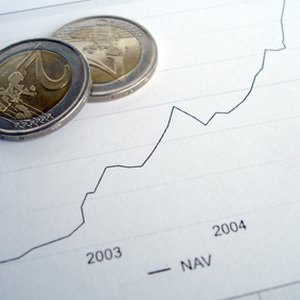
The term “efficient” has a very specific definition in the context of portfolio management. An efficient portfolio is a specific set of investment assets--such as stocks, bonds, commodities, and money market instrument--which creates the highest possible rate of return for a specific level of desired risk. This is the most essential characteristic of an efficient portfolio; however, there are several other elements that every kind of efficient portfolio will have.
Expected Return on Investment
The most essential characteristic of an efficient portfolio is the expected return on investment. This represents the amount of risk that an investor wants to accept in exchange for a return on his or her invested money. It is usually expressed in terms relative to the risk-free rate and inflation.
The risk-free rate is the return that can be made by investing in U.S. government securities. For example, if an investor can achieve an annual return of 3% by investing only in U.S. government securities, then an expected return on investment of 10% is equal to 7% over the risk-free rate, or 10% - 3% = 7%.
Due to the fact that inflation erodes the value of money and assets over time, and it is important to have some idea or inference about the future level of inflation, so that it can be provisionally factored into the expected rate of return. If expected inflation is 2%, and the expected return on investment above risk-free investing is 7%, then the bottom-line return on investment after inflation will be 7% - 2%, or 5%.
Risk
An efficient portfolio is not a risk-free portfolio. Risk is a characteristic of an efficient portfolio. Unsystematic risk represents specific risks attributable to individual assets within the portfolio. Each stock, corporate bond, government security and commodity has its own risks. For example, if an efficient portfolio includes IBM stock, then the unique risks of IBM are present in the portfolio.
Unsystematic risk can be mitigated by diversification. The more variety and quantity of assets in the portfolio, the more diversification there will be. This diversification will lower or eliminate unsystematic risk.
Systematic risk refers to the broad risks found in the economy and stock markets. This is the risk that an investor in a portfolio attempts to understand and quantify.
Liquidity
Another essential characteristic of an efficient portfolio is its liquidity. This refers to the speed at which the portfolio can be converted to cash. Liquidity requirements must be logically tied to the investor’s specific circumstances. If the investor is living off the portfolio, then it needs to be extremely liquid. If the investor’s portfolio serves the purpose of building wealth for a future retirement, then it does not have to be liquid in the short term.
References
- Investments, 7th Edition, Zvi Bodie, Alex Cane, & Alan J. Marcus, 2008.
- Financial Times Definitions
- The Nobel Prize. "The Sveriges Riksbank Prize in Economic Sciences in Memory of Alfred Nobel 1990." Accessed May 6, 2020.
- William J. Bernstein. "The 15-Stock Diversification Myth." Accessed May 6, 2020.
Writer Bio
Tom McNulty is a consultant and a freelance writer based in Houston, Texas. He holds degrees from Yale and Northwestern, and has worked in banking, government, and in the energy industry. McNulty has published several articles for eHow on a variety of finance, accounting, and general business issues.

